Toilets with oblique outlet: design features
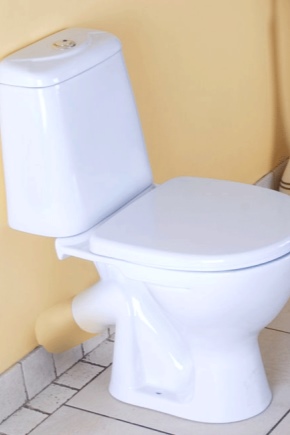
People are drawn to comfort: they make renovation in apartments, acquire land plots outside the city and build houses there, separate bathrooms and put showers in the bathroom and toilet bowls with a microlift in the toilet. The article will consider the question of what a toilet bowl with an oblique outlet means, and what is its design.
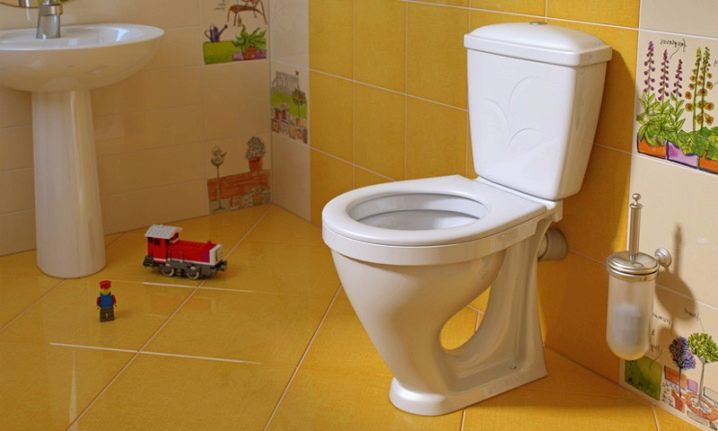
Design features
There are two types of toilets, the bowls of which have different directions of the outlet: in one of them it is directed vertically, in the other it is horizontal. Among the horizontal, there are also differences - toilets with straight and oblique outlets. The latter is sometimes referred to as an angular release. In some sources, the straight and angled options are simply referred to as different types of toilets.
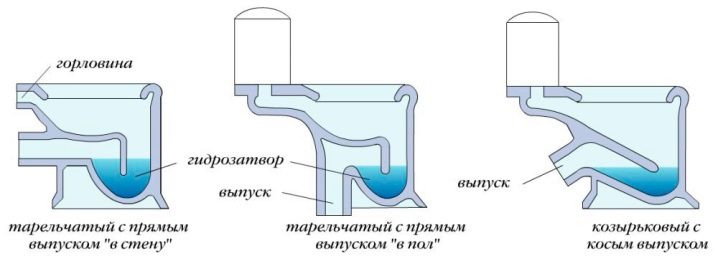
In Russia and countries that were previously part of the USSR, the most common sewerage connections are toilets with horizontal outlet. And especially - with its angular (oblique) version. This circumstance is explained by the typical arrangement of sewer pipes in Soviet urban planning. Currently, little has changed, multi-storey buildings are being built according to the same principle. It is simply impossible to put a toilet bowl with a vertically directed outlet in the toilet rooms of apartments.

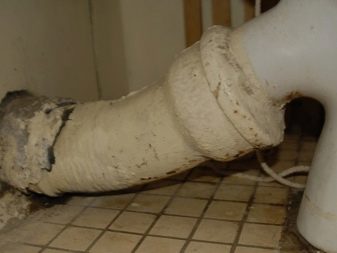
Oblique outlet - this means that the end of the outlet pipe, connected through the elbow to the sewer outlet, is made at an inclination of 30 degrees relative to the floor.
Such a constructive solution has a great advantage over toilets with other options for releasing the contents into the sewer.
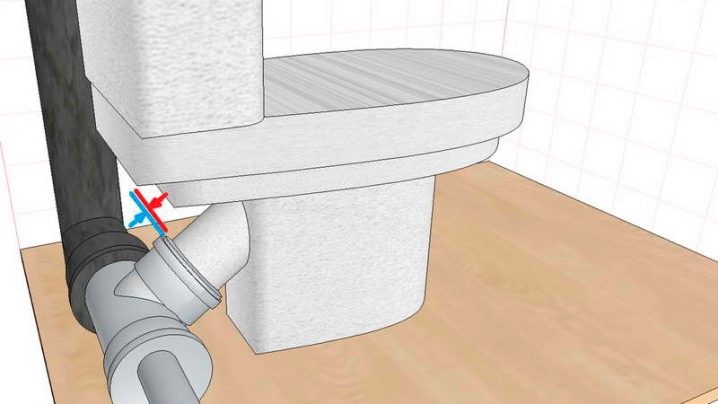
Varieties
Now in stores there are many toilet bowls of different types, designs, colors and even a set of functionalities - elite bathrooms with heated seats, like in a car, a pull-out bidet and even a hairdryer. In domestic plumbing stores, for obvious reasons, most toilets are with an angular outlet of the exhaust system.

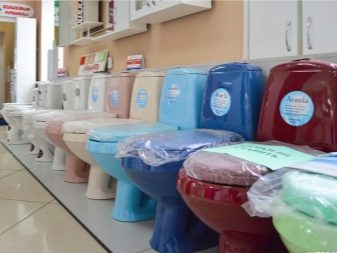
The fact is that toilets differ not only in the appearance of the bowl, but also in its internal structure. And this is a more important point that is decisive when choosing a toilet for your home.
By the design of the bowl, the toilet bowls are divided into the following types.
- Poppet with a one-piece shelf - a type of toilet bowls that is already a thing of the past, but still found on sale. The shelf (or plate) is the very element that contains the substances of waste products intended for subsequent flushing into the sewer;
- Visor with a solid shelf or slope - the most common type, which has undeniable advantages in its design. Has a shelf located at a slope of 30-45 degrees to the front or rear wall of the bowl, or a visor specially arranged in the bowl;
- Funnel-shaped - also have distribution, but of a slightly different nature: this type is more popular for installation in public places than in apartments.
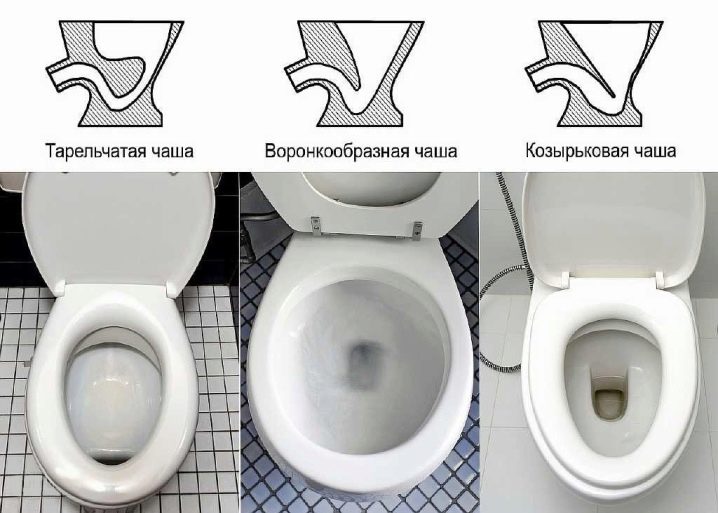
One has only to look inside the bowl, and the type of its device immediately becomes clear. It is not difficult to figure out which outlet pipe - straight, oblique or vertical - a toilet bowl is needed for an apartment or house, even where it has never been before, but there are sewer pipes. Everyone knows about the practice of modern construction of apartments with "black" and "gray" keys.
By how the bell of the sewer pipe is arranged, onto which the adapter connecting the outlet pipe and the sewer will be screwed, a conclusion is made about the design of the future toilet bowl.
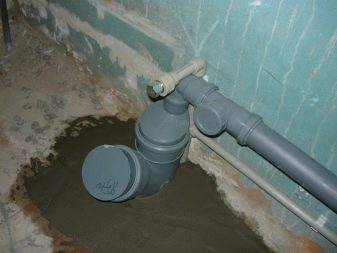
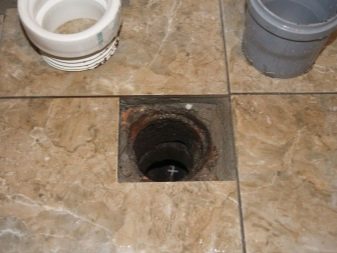
It is also useful to know about the nature of the flow when draining water from the tank to the bowl. There are the following ways to rinse and clean the contents in the bowl:
- cascading, in which water flows through the pipe in one stream;
- circular, when the drain water washes the bowl through several holes located in a circle under the rim of the bowl; on modern models, the water jets from the holes are directed downward at an angle to cover a larger flush area.
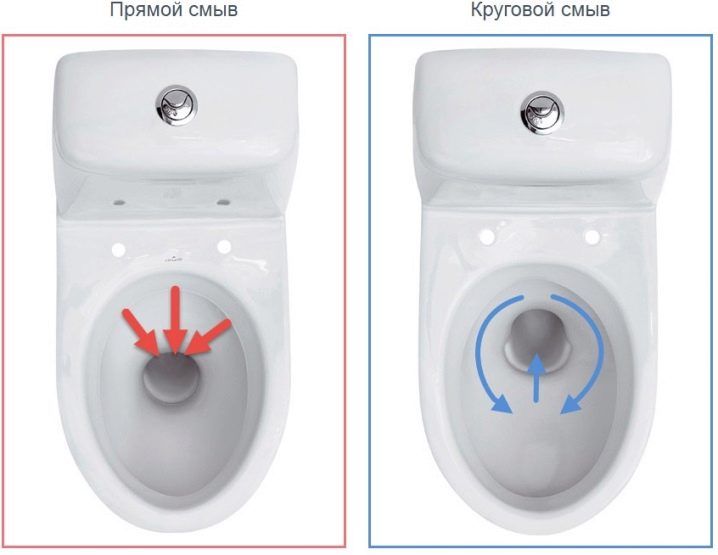
And one more feature that is important for the selection and installation of the toilet is the option of connecting the cistern to the water supply network. There are tanks with a bottom water supply, in which the water supply hose is connected to the inlet of the tank from the bottom, and tanks with a side supply (the inlet is on the side of one of the sides of the tank, closer to the lid).
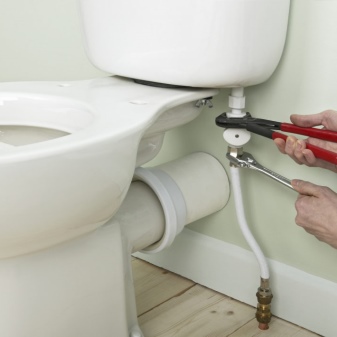
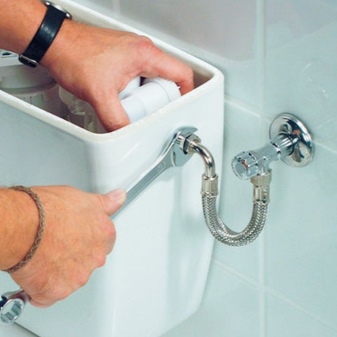
Advantages and disadvantages
A device for a bathroom with an oblique outlet has its pros and cons. But positive qualities prevail, which is confirmed by the good demand for these particular models. The advantages of the product boil down to several points.
- The main advantage of this design is the absence of a strictly fixed position of the toilet bowl in relation to the sewer pipe, for which products with direct or vertical discharge are notorious. The location of the sewerage system to the toilet with an angular outlet at an angle of 0-35 degrees is allowed. This circumstance gave reason to call such a construction universal.
- Thanks to the inclined outlet of the toilet, it is much easier to install it to the sewer. Any small inaccuracies in the location of the sewer socket are easily compensated for.
- Such a bowl rarely clogs up, because in the device for its release there are no sharp turns at right angles - only smooth ones at an angle of 45 degrees. The inclined design does not create high resistance to the passing mass of waste.
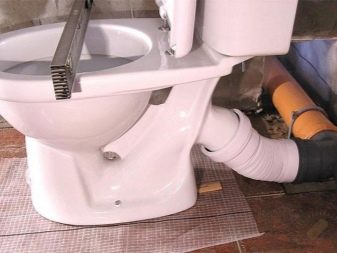

A big "minus" of such products is the noise when flushed. In the combined rooms of the toilet and bathroom, they occupy a significant area.
And if you use hanging bowls with hidden cisterns, or attached models, then there are other inconveniences associated with the repair or replacement of toilets.
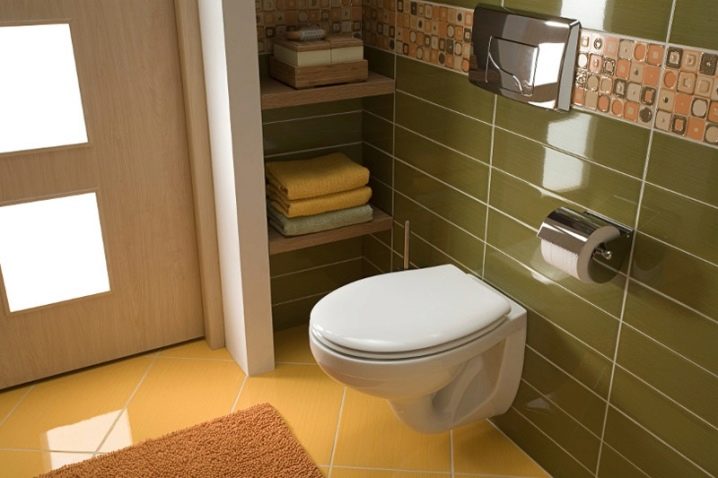
Among the bowls with the design of the internal device, of course, the visor-type models stand out for their advantages:
- the waste is washed off cleanly, additional manipulations are rarely required to clean the bowl (for example, with a brush);
- the presence of a visor and a low level of "duty" water in the water seal prevent it from splashing with the subsequent ingress of water particles and impurities on the skin of a seated person;
- thanks to the water seal, unpleasant odors and gases from the sewage system do not get inside the room.
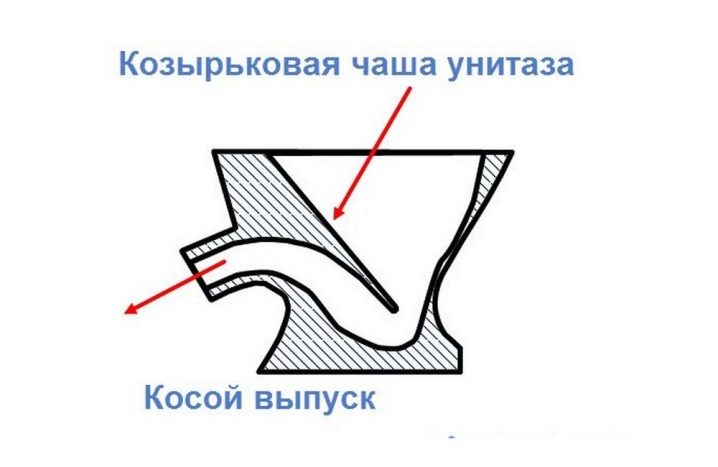
Compared to its funnel-shaped counterpart, the visor toilet has a "minus" - a large flow of water for flushing. But the issue is partially solved by installing a dual-mode flush button (with an appropriate device for this in the tank).
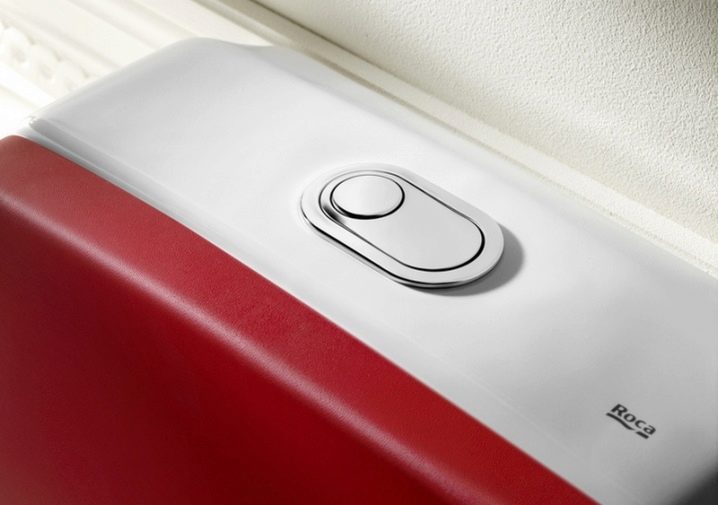
The engineers of the funnel-shaped bowls are trying to eliminate splashes in their models. They are looking for the ideal positioning of the outlet in the bowl and the nominal water level in it, at which there should be no splashing. This system was called "anti-splash".
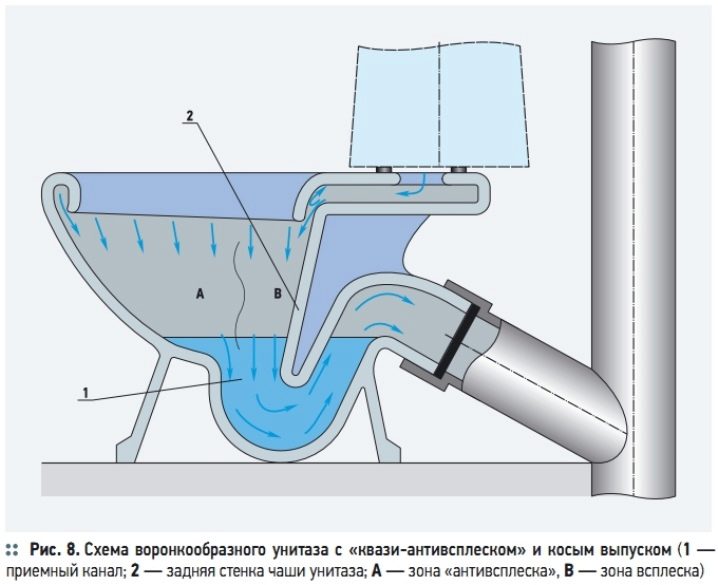
Manufacturing materials
The most popular and revered material for the manufacture of toilets is porcelain. For people looking for a more budgetary option, earthenware products are made. For public toilets, stainless steel and plastic devices are suitable.
But expensive bowls and devices relying on them can be poured out of artificial marble or cut out of natural stone, as well as made of glass.
The most hygienic and durable (with a careful attitude) is considered a porcelain product. Faience is considered an analogue of porcelain, but it is much inferior to it in strength, service life and resistance to detergents.Its only "plus" is the low price.
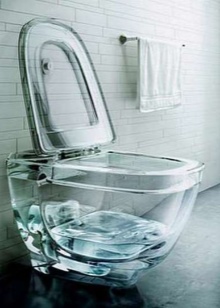
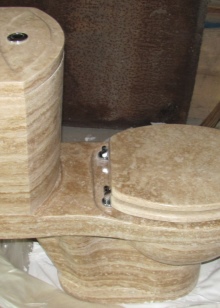

Popular models and brands
Comparing manufacturers of plumbing fixtures, among the domestic ones, the best of them can be distinguished:
- Santek - is the leader of Russian sanitary ware, producing universal products at affordable prices. Regularly ranks high in the rating for the quality and cost of products;
- Sanita - also one of the leaders. The products of this manufacturer are exclusively made of porcelain, which is not inferior to the materials of leading Western suppliers of toilet bowls. Unfortunately, the bowls of this company do not have an anti-splash (a special shelf on the rim of the bowl). But the pricing policy of the enterprise is the most popular;
- Santeri - this manufacturer, due to design ideas and high technologies, creates competitive plumbing, which is in good demand among the domestic buyer.
All enterprises use foreign technological lines.
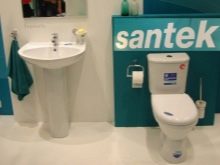
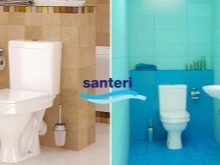
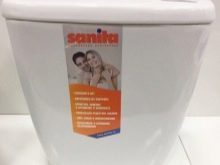
Among the import manufacturers of sanitary ware with good reviews about affordability in price and quality are the following firms:
- Gustavsberg - a Swedish concern that supplies convenient plumbing equipment for apartments, including those for the disabled;
- Jika - a Czech company that has production facilities not only at home, but also in Russia, which puts its toilet bowls in a number of inexpensive but high-quality products. One of the most popular products is Jika Vega compact toilet bowls with a funnel-shaped bowl and a dual-mode flush;
- Roca - Spanish brand for the production of sanitary ware: it is distinguished by collections for small spaces and toilets with electronic control; also attracted by the diverse style of products.

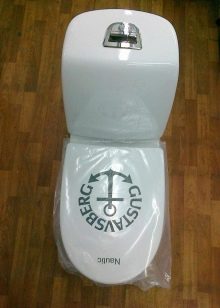
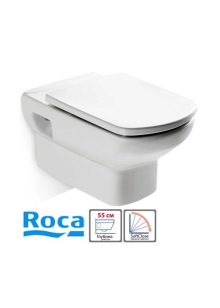
Among the manufacturers of elite products, the AM trademark is considered the most famous. PM (UK, Italy, Germany).
For summer cottages, offices or apartments with a small family budget, inexpensive models of toilet bowls are Katun and Tom products of the Novokuznetsk plant Universal. They have porcelain funnel-shaped bowls, oblique escapement and tanks with bottom or side lining.
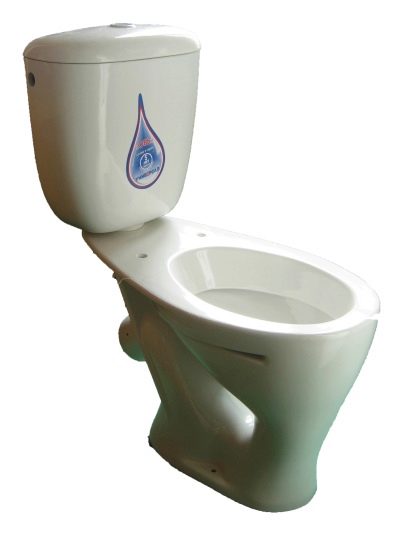
Installation tips
A distinctive feature of oblique outlet toilets is that installation does not require special plumbing skills. For the case of replacing an old toilet, the tips are as follows:
- measure the base with a level for the level of the platform and correct irregularities that can lead to loosening and cracks in the bowl;
- if the base is not dense enough or dirty, then it is better to remove it and fill in a new one;
- it is better to mount the bowl to the floor with screws - it will be more convenient to work with the bowl installation;
- the final tightening of the fasteners should be done after the bowl is completely installed with the connection of the outlet to the sewer.
All tank devices are sold already assembled, it remains only to insert them in the right places according to the drawing and the manufacturer's instructions.
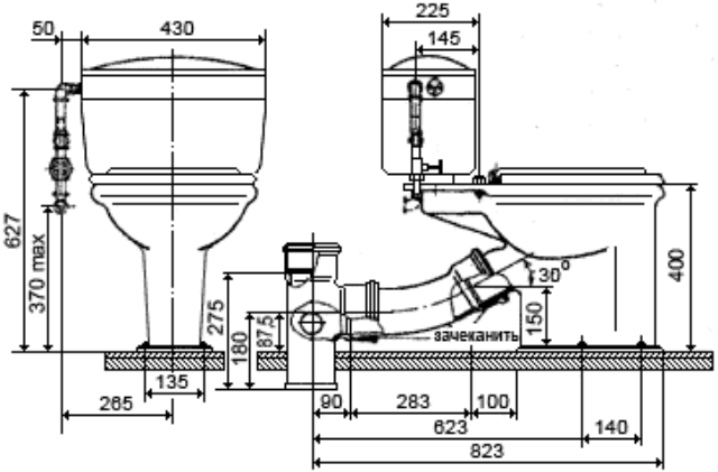
The main task is the operation of connecting the outlet to the sewer socket. This is done in one of three ways:
- directly into the socket (ideal when replacing toilets of the same type);
- using a corrugated plumbing sleeve;
- using an eccentric cuff.
The main thing with any method is to reliably seal the joints with O-rings and sealant. And after the end of the work, give time for the sealing compound to dry.
For information on how to choose a toilet and which one is better, see the next video.













The comment was sent successfully.